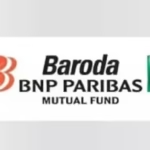Hybrid mutual funds have gained popularity in the investment world for their balanced approach to risk and reward. By combining equity and debt instruments, these funds offer diversification and stability, making them ideal for investors with moderate risk appetites.
Mutual fund investors are now turning to safer investment options amid signs of instability in global markets. That is why hybrid funds are becoming their choice these days, as these funds provide diversification and stability in assets. The assets under management (AUM) of hybrid funds reached a record high of ₹ 8.61 lakh crore in August, making hybrid funds the highest profit-earning among mutual fund categories.
What Are Hybrid Mutual Funds?
Hybrid mutual funds are investment vehicles that allocate assets across multiple asset classes, primarily equities and fixed-income securities. Some hybrid funds may also include gold, real estate, or international assets, depending on the scheme’s objective. The primary goal is to balance risk and return by leveraging the growth potential of equities and the stability of debt instruments.
The reason for this tremendous growth of hybrid mutual funds is the special structure of these funds. Hybrid funds usually invest primarily in equity and debt as well as commodities like gold and silver. These funds provide diversification and allocation of assets to maintain a balance between risk and return.
Hybrid mutual funds try to offer the best of multiple asset classes in a single product. When the market is bullish, the equity portion of the fund generates returns, while the debt portion provides stability. These funds aim to achieve long-term capital appreciation through equity and short-term stability and regular income through debt.
Types of Hybrid Mutual Funds
- Equity-Oriented Hybrid Funds: These funds invest a minimum of 65% of their corpus in equities and the remainder in debt instruments. They are suitable for investors seeking higher returns with moderate risk exposure.
- Debt-Oriented Hybrid Funds: These funds allocate the majority of their portfolio to debt instruments (above 60%), with a smaller portion invested in equities. They cater to conservative investors who prioritize stability.
- Balanced Advantage Funds (Dynamic Asset Allocation): These funds dynamically adjust the allocation between equities and debt based on market conditions. They aim to maximize returns during bullish markets and preserve capital during bearish phases.
- Arbitrage Funds: Leveraging the price differential between the cash and derivatives markets, arbitrage funds are a low-risk category suitable for short-term investments.
- Multi-Asset Funds: These funds diversify across three or more asset classes, such as equity, debt, and commodities, for enhanced risk mitigation.
- Conservative Hybrid Funds: Similar to debt-oriented funds, these focus heavily on fixed-income instruments with a small equity component to boost returns.
Advantages of Hybrid Mutual Funds
- Diversification: By investing in multiple asset classes, hybrid funds reduce the risk associated with a single asset class.
- Flexibility: The variety of hybrid funds ensures investors can find a scheme aligned with their risk tolerance and financial goals.
- Balanced Risk-Return: Combining equity and debt minimizes volatility while providing potential for growth.
- Professional Management: Like other mutual funds, hybrid schemes benefit from expert fund management.
- Tax Efficiency: Depending on the equity-debt composition, some hybrid funds may offer tax benefits similar to equity funds.
Who Should Invest in Hybrid Mutual Funds?
Hybrid funds are suitable for:
- New Investors: Offering a blend of stability and growth, they are a good entry point for beginners.
- Moderate Risk Takers: Investors seeking a balance between risk and reward.
- Retirees and Conservative Investors: Debt-oriented or conservative hybrid funds provide regular income with minimal risk.
Risks to Consider
- Market Volatility: Equity exposure can lead to fluctuations in returns.
- Interest Rate Risk: Debt instruments may lose value in a rising interest rate environment.
- Management Decisions: The fund manager’s strategy significantly impacts performance, especially in dynamically managed funds.
Conclusion
Hybrid mutual funds are an excellent option for investors seeking a balanced investment approach. They offer the flexibility to align with various financial goals while managing risk through diversification. Whether you’re a first-time investor or looking to stabilize your portfolio, hybrid funds provide a versatile solution. Before investing, assess your risk tolerance, financial objectives, and investment horizon to select the hybrid fund that best suits your needs.








